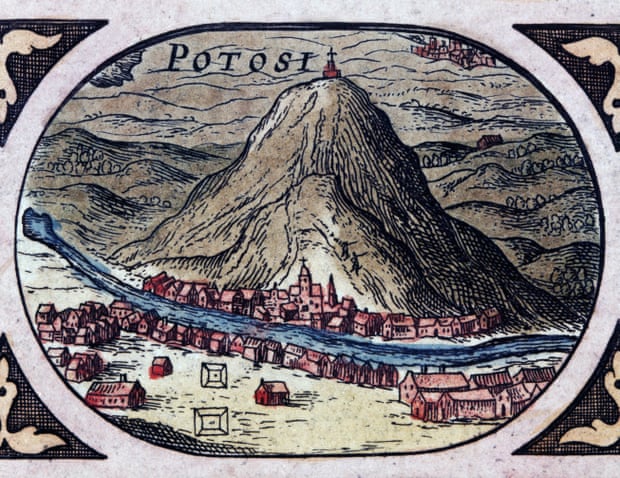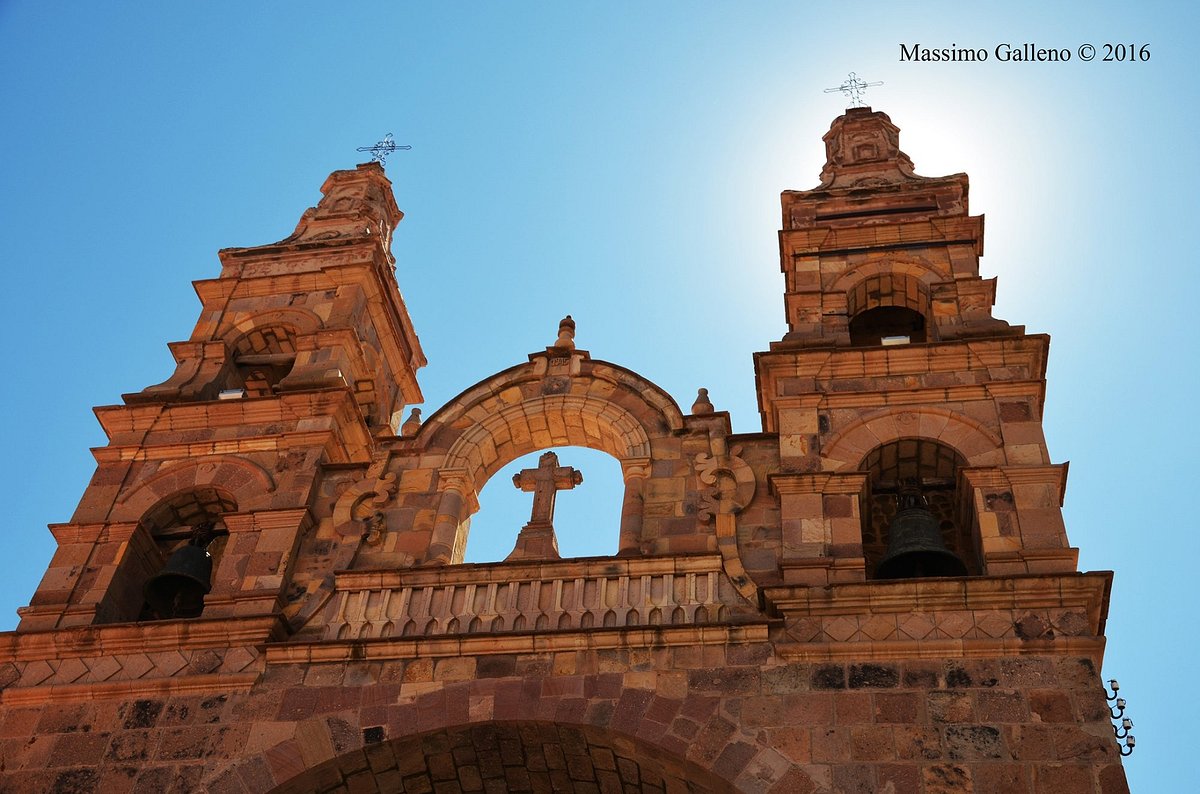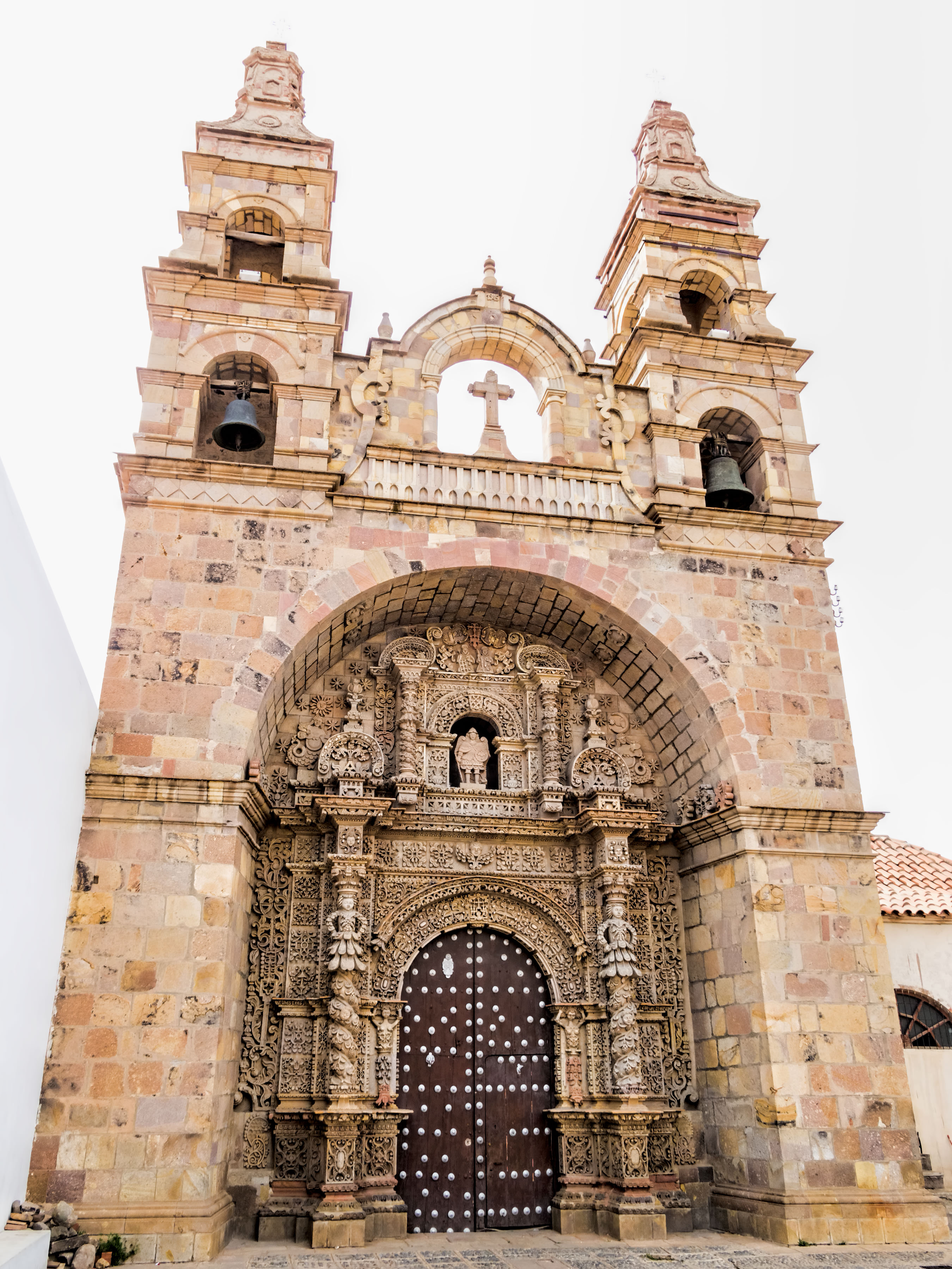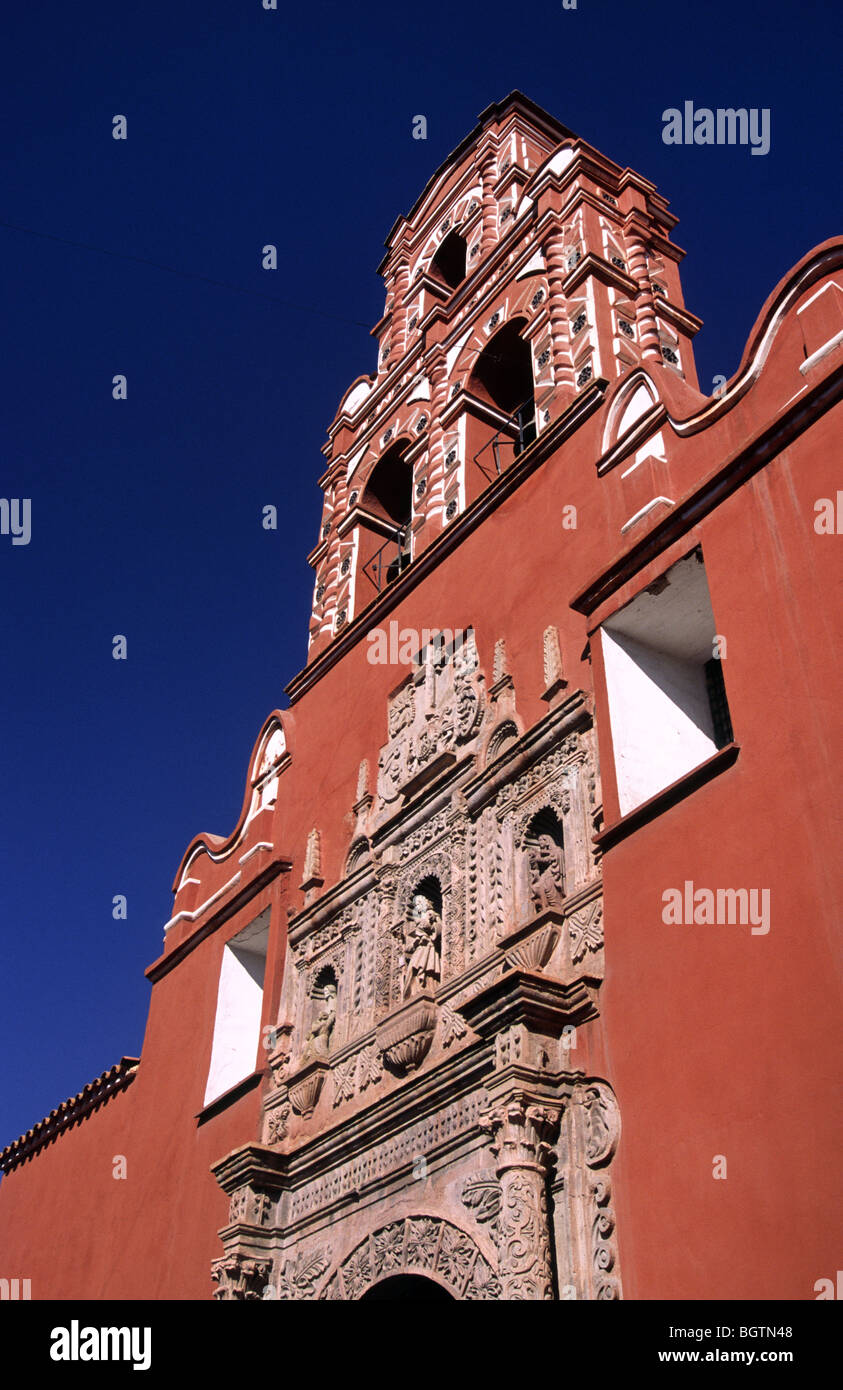Potosi Churches: Baroque Gems of Bolivia

Potosi Churches: Baroque Gems of Bolivia
Brief history of Potosi and its significance
Potosi, a city in Bolivia, is renowned for its rich history and the abundance of silver mines that once made it one of the wealthiest cities in the world. During the colonial period, Potosi became Bolivia's economic and cultural centre, attracting people from all over the world. The silver extracted from the mines was crucial in funding the Spanish Empire.
Overview of Potosi's architectural gems
Potosi boasts an impressive collection of churches that showcase the magnificent baroque style of architecture. These churches were built during the 16th and 17th centuries, during the height of Potosi's prosperity. The architecture of these churches is characterized by intricate details, lavish ornamentation, and grandeur, reflecting the wealth and power of the city during that time.
One of the most famous churches in Potosi is the San Lorenzo Church. It's stunning façade and ornate interior make it a must-visit for any traveller. Another noteworthy church is the Cathedral Basilica of Potosi, the city's main religious building. Its impressive size and remarkable artwork make it a true masterpiece of baroque architecture.
The Santo Domingo Church is also worth mentioning, with its beautifully decorated altarpieces and colourful murals. The San Francisco Church is also an architectural marvel, with its meticulously designed stone carvings and imposing bell towers.
These churches not only stand as architectural treasures but also hold great historical and cultural significance. They serve as a reminder of Potosi's glorious past and the impact of the silver industry on the city.
The churches of Potosi are not just buildings; they are baroque gems that tell the story of a remarkable era in the city's history. Visiting these churches allows you to admire their intricate details, experience the grandeur of the baroque style, and immerse yourself in the rich cultural heritage of Potosi. So, make sure to include a visit to these architectural wonders when exploring Bolivia.

San Lorenzo de Carangas Church
One cannot miss the magnificent San Lorenzo de Carangas Church when exploring the city of Potosi in Bolivia. This architectural masterpiece stands as a testament to the city's rich history and cultural heritage. In this article, we will delve into this baroque gem's fascinating history and exquisite architecture.
History and architecture of San Lorenzo de Carangas
The San Lorenzo de Carangas Church was built during the 16th and 17th centuries when Potosi was at the height of its prosperity. It was constructed by skilled artisans and craftsmen influenced by the baroque architectural style, characterized by intricate details and lavish ornamentation.
This church holds significant historical importance as it served as a place of worship for the residents of Potosi during colonial times. It provided solace for the miners who toiled in the silver mines and reflected the wealth and power of the city.
The architecture of San Lorenzo de Carangas is truly remarkable. Its façade boasts a grand entrance with elaborately carved stone details and a towering bell tower that commands attention. The church's interior is equally breathtaking, with high ceilings adorned with ornate frescoes and paintings, exquisite altarpieces, and intricate sculptures.
Baroque elements and decorations of the church
The San Lorenzo de Carangas Church is a perfect example of baroque architecture, which aimed to create a sense of theatricality and grandeur. The church is adorned with an abundance of architectural elements and decorations that showcase the mastery of the craftsmen of that time.
One of the prominent features of the church is the use of decorative motifs, such as spiralling columns, floral reliefs, and intricately carved angels. These details add visual interest and create a sense of movement within the space.
The church's interior is adorned with stunning frescoes and paintings depicting religious scenes and figures. These vibrant artworks are intricately detailed and create a captivating visual experience for visitors.
The altarpieces of San Lorenzo de Carangas are a sight to behold. They are adorned with gold leaf, intricate wood carvings, and statues of saints. These altarpieces serve as focal points within the church and symbolize the devotion and faith of the community.
The San Lorenzo de Carangas Church in Potosi is a true gem of baroque architecture. It's rich history and exquisite architectural details make it a must-visit attraction for travellers. The intricate designs, ornate decorations, and vibrant artwork within the church provide a glimpse into the remarkable craftsmanship of the time. So, make sure to include a visit to this splendid church when exploring Potosi, Bolivia.

San Francisco Church
When visiting the beautiful city of Potosi in Bolivia, you cannot miss the stunning San Francisco Church. This architectural marvel is another gem that showcases the city's rich history and cultural heritage. In this article, we will explore the fascinating historical background and construction of the San Francisco Church, as well as the baroque features and artistic details that make it a true masterpiece.
Historical background and construction of San Francisco Church
The San Francisco Church has a rich historical background dates back to the 16th century. It was built in response to the growing population of indigenous people converting to Christianity during the Spanish colonial period. The church was constructed by skilled craftsmen and artisans influenced by the Baroque architectural style.
The church's construction took several years, with various additions and enhancements made over time. The church's facade features intricate carvings and ornate details, showcasing the impressive craftsmanship of its builders. The church's interior is equally captivating, with high ceilings adorned with frescoes, beautiful altarpieces, and sculptures.
Baroque features and artistic details of the church
The San Francisco Church is a true representation of baroque architecture and artistry. It boasts several distinctive features and artistic details, making it a must-visit attraction for all art and history enthusiasts.
One of the prominent features of the church is its grand entrance, adorned with carved stone details and intricate sculptures. The facade showcases the elaborate intricacy that was characteristic of the Baroque style. As you step inside, you will be mesmerized by the high ceilings adorned with frescoes and paintings depicting religious scenes and figures.
The altarpieces of the San Francisco Church are truly remarkable. They are adorned with delicate wood carvings, statues of saints, and gold leaf accents. These magnificent altarpieces serve as focal points within the church, representing the devotion and faith of the community.
You will also find decorative motifs throughout the church, such as spiralling columns, ornate reliefs, and intricate carvings. These details add a sense of visual interest and create a stunning visual experience for visitors.
The San Francisco Church in Potosi is a true baroque gem that showcases the remarkable craftsmanship of the time. Its historical background, construction, and artistic details make it a must-visit attraction for anyone visiting the city. Make sure to include a visit to the San Francisco Church in your itinerary and immerse yourself in the beauty and history of this architectural masterpiece.

Santo Domingo Church
When exploring the charming city of Potosi in Bolivia, visit the magnificent Santo Domingo Church. This architectural masterpiece is a true representation of baroque art and craftsmanship, offering a glimpse into the city's rich history and cultural heritage. Let's delve into the significance and construction of Santo Domingo Church and its baroque ornamentation and unique architectural elements.
Significance and Construction of Santo Domingo Church
Santo Domingo Church holds great historical significance as it was built in response to the growing influence of the Dominican Order during the Spanish colonial period. The church was constructed in the 16th century by skilled artisans and craftsmen, showcasing their exceptional talent and dedication.
The construction of Santo Domingo Church took several years and involved using locally sourced materials, such as stone and adobe. The façade of the church features intricate carvings and decorative details, symbolizing its builders' religious devotion and artistic prowess.
Baroque Ornamentation and Unique Architectural Elements
As you enter Santo Domingo Church, you will be mesmerized by the elaborate baroque ornamentation adorns the interior. The high ceilings are adorned with exquisite frescoes and paintings depicting religious scenes and heavenly figures. The vibrant colours and intricate details bring a sense of grandeur and awe-inspiring beauty.
One of the unique architectural elements of Santo Domingo Church is its magnificent dome. The dome is a visual marvel, with its soaring height and meticulously crafted designs. It serves as a focal point and represents the divine connection between heaven and earth.
The altarpieces within Santo Domingo Church are truly remarkable. They are adorned with delicate wood carvings, gilded accents, and statues of saints. These intricately designed altarpieces serve as a testament to the community's religious devotion and artistic talent.
You will also spot decorative motifs throughout the church, such as spiralling columns, ornate reliefs, and intricate carvings. These details add a sense of dynamism and visual interest, creating a truly immersive experience for visitors.
Santo Domingo Church is a baroque gem showcasing Potosi's exceptional craftsmanship and artistic legacy. Its historical significance, intricate baroque ornamentation, and unique architectural elements make it a must-see attraction. Immerse yourself in the beauty and grandeur of Santo Domingo Church and appreciate the rich cultural heritage it represents.

When exploring the enchanting city of Potosi in Bolivia, include a visit to the breathtaking Santa Teresa Church. This baroque masterpiece is a true gem, showcasing exceptional craftsmanship and intricate designs that will leave you in awe. Let's delve into the history and construction of Santa Teresa Church, its stunning baroque style and the mesmerizing details found inside.
History and Construction of Santa Teresa Church
Santa Teresa Church holds a significant place in Potosi's history and cultural heritage. It was built in the 18th century to symbolise religious devotion and artistic excellence. Skilled artisans and craftsmen dedicated their talent and time to constructing this architectural marvel.
The construction of Santa Teresa Church spanned several years and involved using locally sourced materials such as stone and adobe. The church's facade is adorned with intricate carvings and decorative details, showcasing the artistic prowess of its builders. These ornate elements preserve the history and cultural significance of the church.
Baroque Style and Intricate Designs Inside the Church
Step inside Santa Teresa Church, and you will be captivated by the extravagant baroque style and the intricate designs that embellish the interior. The high ceilings are adorned with breathtaking frescoes and paintings depicting religious scenes and heavenly figures. The vibrant colours, intricate details, and skilful brushstrokes create a sense of grandeur and serenity.
The altar of Santa Teresa Church is a true testament to the baroque style, with its opulent decorations and intricate wood carvings. Gilded accents and delicate statues of saints add to the ornate beauty of the church. These finely crafted altarpieces reflect the community's religious devotion and artistic talent.
As you explore further, you will discover other decorative motifs that add to the allure of Santa Teresa Church. Spiralling columns, ornate reliefs, and intricate carvings can be found throughout, creating a sense of harmony and visual interest. These details demonstrate the baroque era's meticulous attention to detail and craftsmanship.
Santa Teresa Church is one of the baroque gems of Potosi, Bolivia. Its rich history, intricate designs, and baroque style make it an architectural marvel worth visiting. Immerse yourself in the beauty and serenity of Santa Teresa Church and appreciate the artistic legacy it represents. Witness the devotion and talent of the past come alive.
